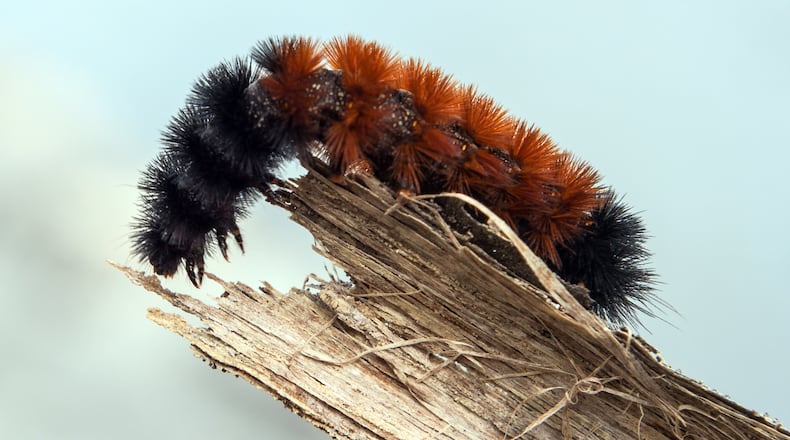In its official forecast for the upcoming winter, which begins on Dec. 21, the National Oceanic and Atmospheric Administration predicts a drier and warmer season for Georgia.
NOAA, of course, has a vast array of supercomputers and sophisticated monitoring instruments aboard sea buoys, satellites and other devices to help make reliable predictions. I am greatly appreciative of such technology and NOAA’s expertise.
On the other hand, as I ramble through woods, fields and other wild places at this time of year, I find myself looking for what old-timers say are nature’s signs of what winter will be like — even though those signs are based mostly on folk tales. Nevertheless, I am fascinated by the winter folklore.
For instance, the woolly bear caterpillar, which is the larval stage of the Isabella tiger moth, has long been considered an indicator of upcoming winter weather. Folklore says that if a woolly bear’s brown band is wide, the winter will be mild; if the brown band is narrow, the season will be colder than usual.
According to a neighbor who came across a woolly bear sporting a wide band the other day, the coming winter indeed will be mild.
Some folks believe that the amount of acorns that oak trees drop in fall also may be a key to predicting winter weather. Folklore holds that an abundant acorn crop means a harsh winter ahead; a sparse crop portends a warmer season.
What does this year’s crop look like? Overall, the Georgia Wildlife Resources Division rates this year’s acorn production as “poor” based on surveys conducted in North Georgia in early fall.
But whether it means a mild winter or not, a poor acorn crop does not bode well for the some 100 species of wild creatures that depend on acorns to help make it through the winter. They include bears, deer, wild turkeys, squirrels, mice, rabbits, foxes, raccoons, quail, blue jays, woodpeckers and on and on.
IN THE SKY: From David Dundee, Tellus Science Museum astronomer: The moon will be full on Wednesday. Venus and Mercury are very low in the west just before sunset. Mars is high in the east at dark and will be at its brightest as it reaches its closest distance to Earth — 50 million miles. Mars will appear near the moon on Wednesday night. Jupiter is high and Saturn is very low in the southwestern sky at dark.
Charles Seabrook can be reached at charles.seabrook@yahoo.com.
About the Author
Keep Reading
The Latest
Featured


